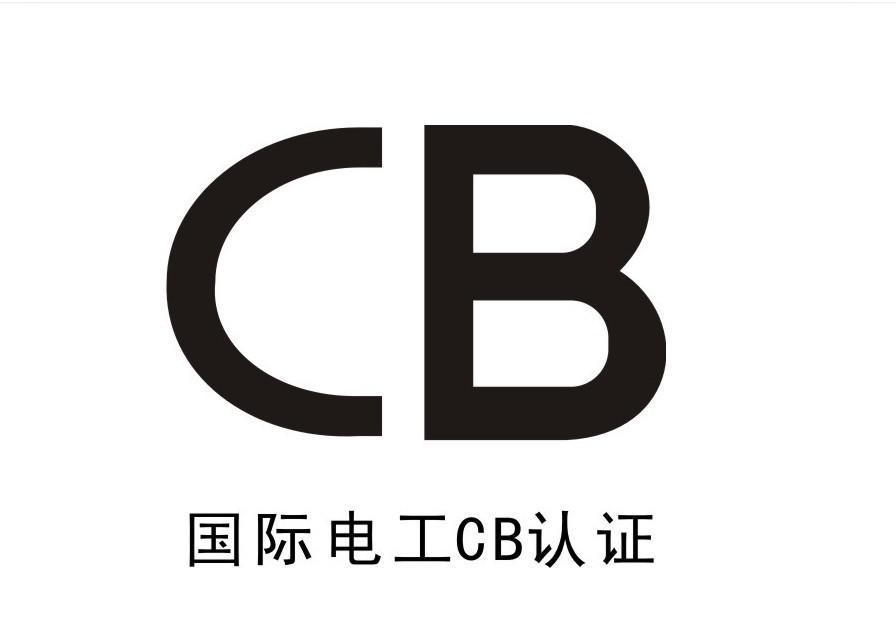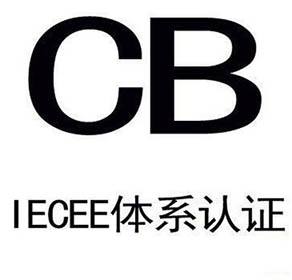CB certification
The CB system (IEC system for conformity testing and certification of electrical products) is an international system operated by IECEE. The certification bodies of IECEE member states test the safety performance of electrical products based on IEC standards. The test results are CB test reports and CB The system of mutual recognition of test certificates in IECEE member countries. The purpose is to reduce the barriers to international trade that arise from having to meet different national certification or approval criteria. IECEE is the abbreviation of International Electrotechnical Commission Electrotechnical Product Qualification Testing and Certification Organization.
Enterprises that obtain the cB test certificate are beneficial to the export of electrical products used in homes, offices, workshops and similar places. "It is directly related to personal safety. Such products are subject to compulsory certification in some countries, that is, to obtain the country‘s certification certificate. After that, it is allowed to be exported to the country and sold in the country‘s market. Even in countries that do not implement compulsory certification, consumers are willing to buy certified products with certification marks for their own safety.

How to apply for CB certification
1. Fill in the CB test certificate application form in English (typed).
2. The English name of the China Electrical Product Certification Committee should be filled in between the four small black dots on the upper right of the homepage of the application form.
3. Please fill in the application date clearly.
4. If the applicant and the manufacturer are the same unit, fill in the same name and address in the columns respectively.
5. In the column of the components used in the whole machine that have obtained the CB test certificate, if there is any, the name of the component and its cB certificate number should be filled in.
6. Signed by the legal representative, the name of the legal representative is typed out in Chinese Pinyin, and the legal representative personally signs.
The advantages of CB certification
The vast majority of electrical and electronic products need to meet different regulations when entering each country. In the past, it was a difficult and time-consuming process to obtain product safety certification in various countries. But now relying on the CB system, manufacturers can obtain safety certifications in more than 50 countries at once. Upon successful completion of the test, a CB test certificate and corresponding CB test report will be issued to the product. The certificate and the report together constitute an international passport, which allows the manufacturer to apply for national certification of any national certification body in any country or region participating in the CB system, usually without additional testing.
The advantages of the CB certification system include:
Fast: Accelerate the certification of various countries, so that products can enter the market faster
Efficiency: CB system processing applications are given priority when possible
Saving: saving workload, saving testing procedures, saving samples
Convenience: One-stop local testing for access to international markets

Member States of the current CB certification system
Up to now, a total of 66 certification bodies in 54 countries and more than 270 CB laboratories under them have participated in this mutual appointment system. The member countries participating in the CB system include all major exporters of China‘s mechanical and electrical products.
(Argentina, Australia, Austria, Bahrain, Belarus, Belgium, Brazil, Bulgaria, Canada, China, Colombia, Croatia, Czech Republic, Denmark, Finland, France, Germany, Greece, Hungary, India, Indonesia, Ireland, Israel, Italy, Japan , Kenya, Korea, Libya, Malaysia, Mexico, Netherlands, New Zealand, Norway, Pakistan, Poland, Portugal, Romania, Russia, Saudi Arabia, Serbia, Singapore, Slovakia, Slovenia, South Africa, Spain, Sweden, Switzerland, Thailand, Turkey, Ukraine, the United Arab Emirates, the United Kingdom, the United States) and more than 60 national certification body members have participated in the CB system, aiming to provide a "one test, one certificate" conformity assessment model and reduce trade technical barriers. The members mutually recognize the CB test report and certificate, and use this as the basis for obtaining the national certification.
The difference between CB certification and CE certification
CB certification is only for sample testing. If the foreign certification mark is converted, a factory inspection is required. The CB certificate must be presented together with the CB test report to be valid. When applying for a CB certificate, the applicant should pay attention to explain the country/region to be exported to CQC and CBTL first, so that the certification body can help understand the standard difference of the country, arrange the difference experiment in time, and avoid the applicant to the foreign certification body/test. When institutions apply for additional experiments, delay the accreditation process and invest more costs. CB certification is applicable in the member countries of the CB system, covering developed countries and most developing countries around the world.
The CE mark is applicable to 28 European countries including the European Union. CB certification only covers safety requirements, even if CB certification includes EU differences, but if the product is also covered by other EU directives (such as electromagnetic compatibility EMC, machinery directive, etc.), its CB certification cannot indicate that it has complied with the CE mark. requirements, it can only show that the product has met the requirements of the low voltage directive (LVD) of the CE mark. The CE mark contains multiple directives, but when the product is only applicable to the Low Voltage Directive (LVD), the CB certification including the EU differences proves that it has met the requirements of the CE mark, so companies can affix the CE mark on the product.





